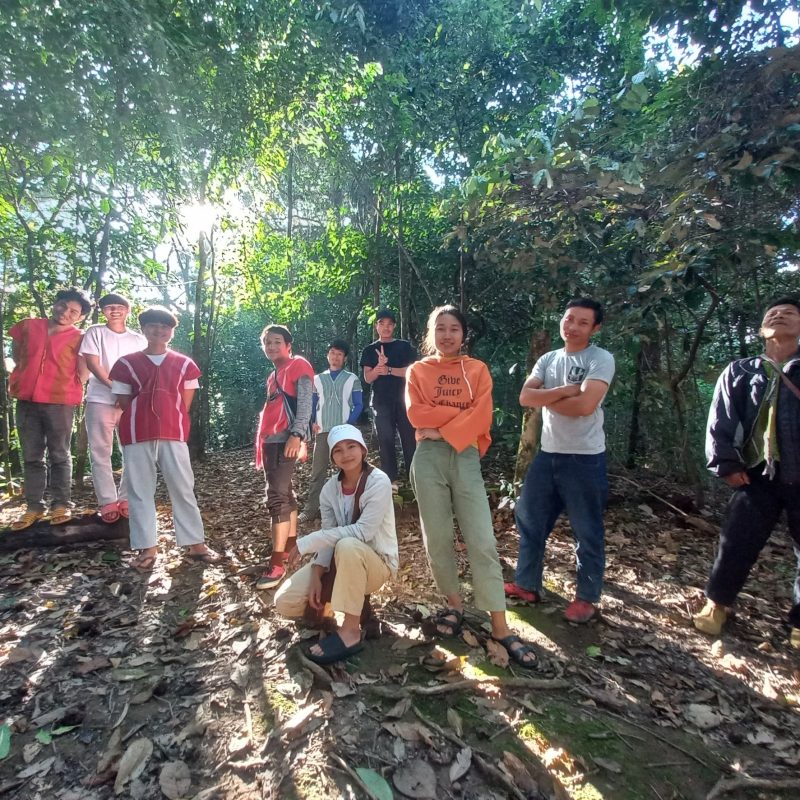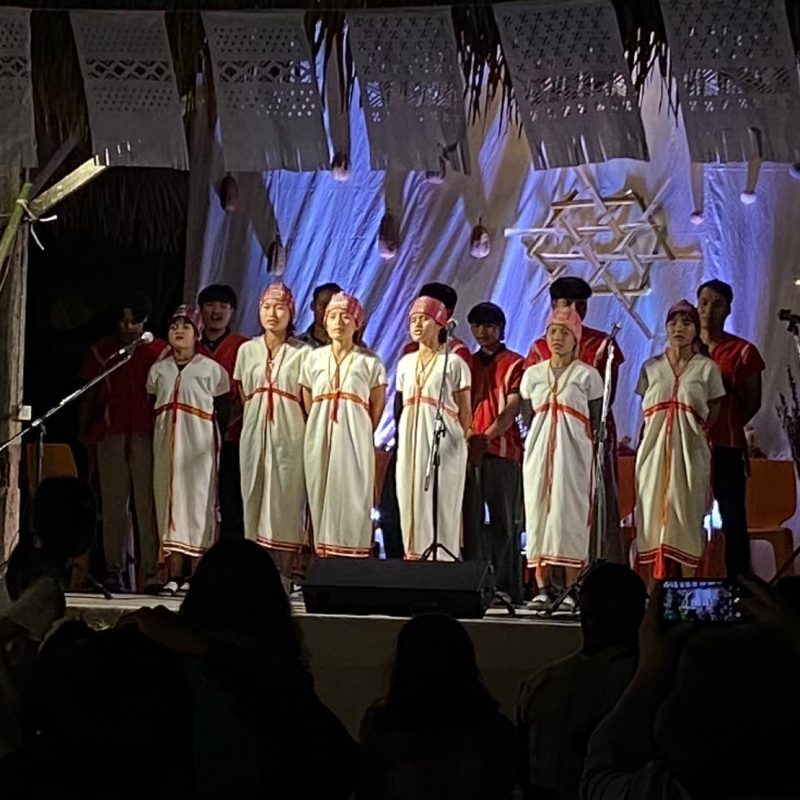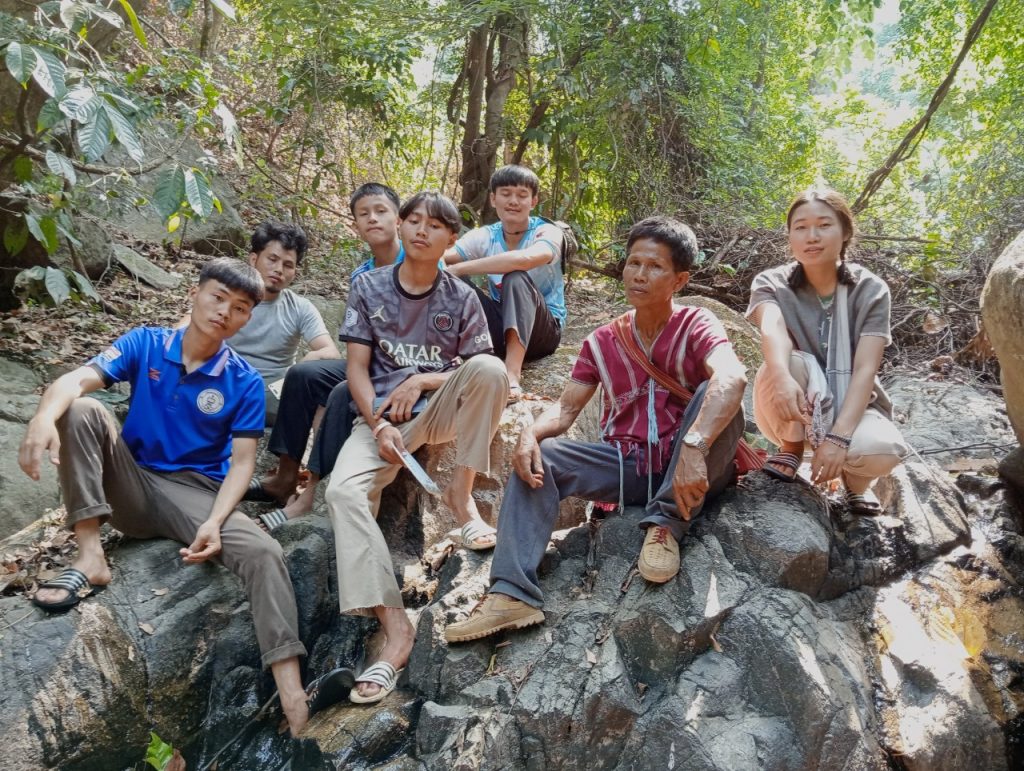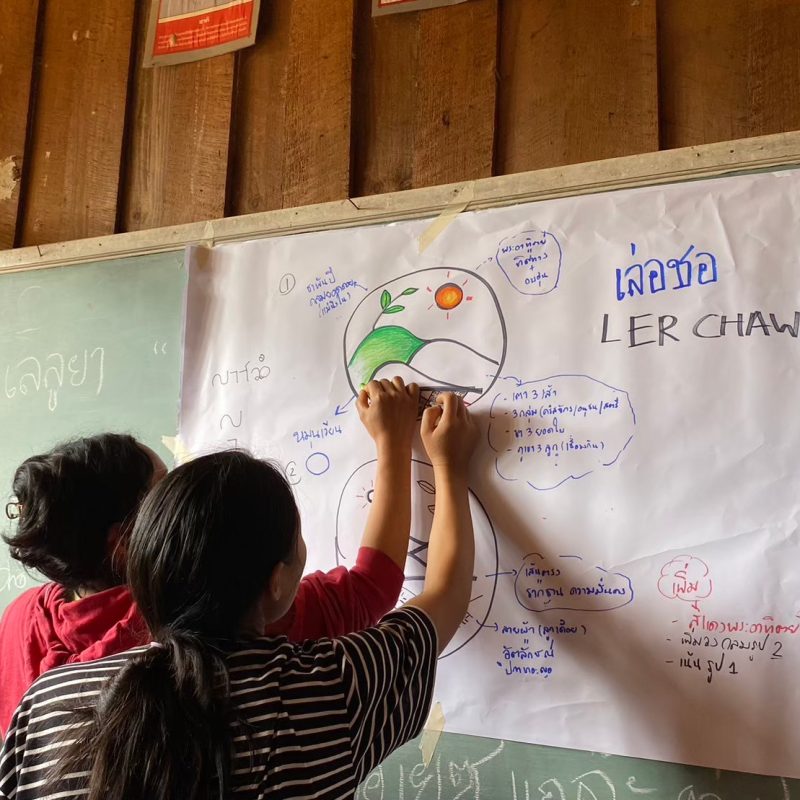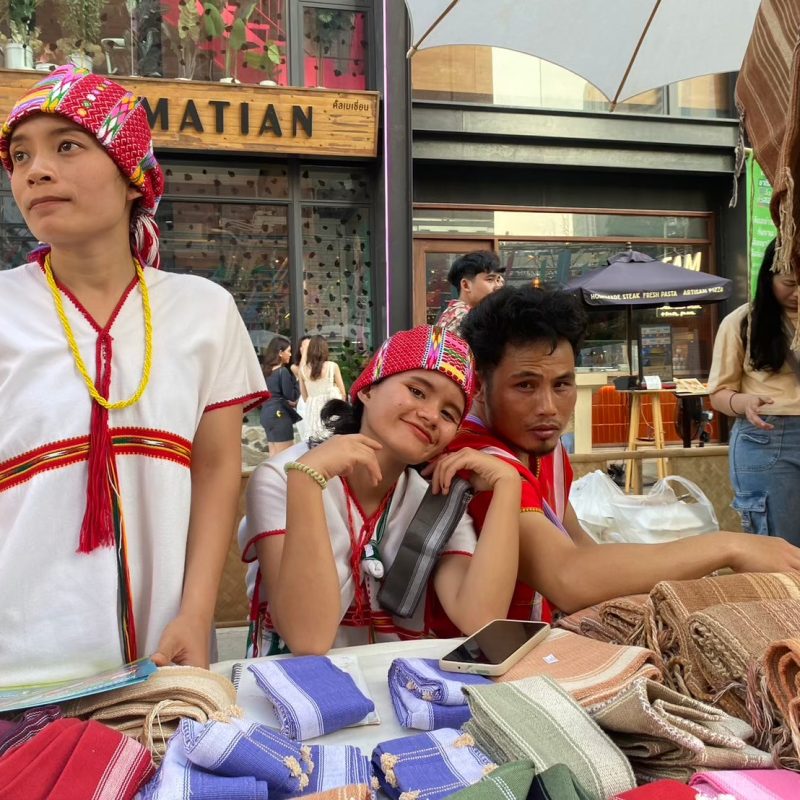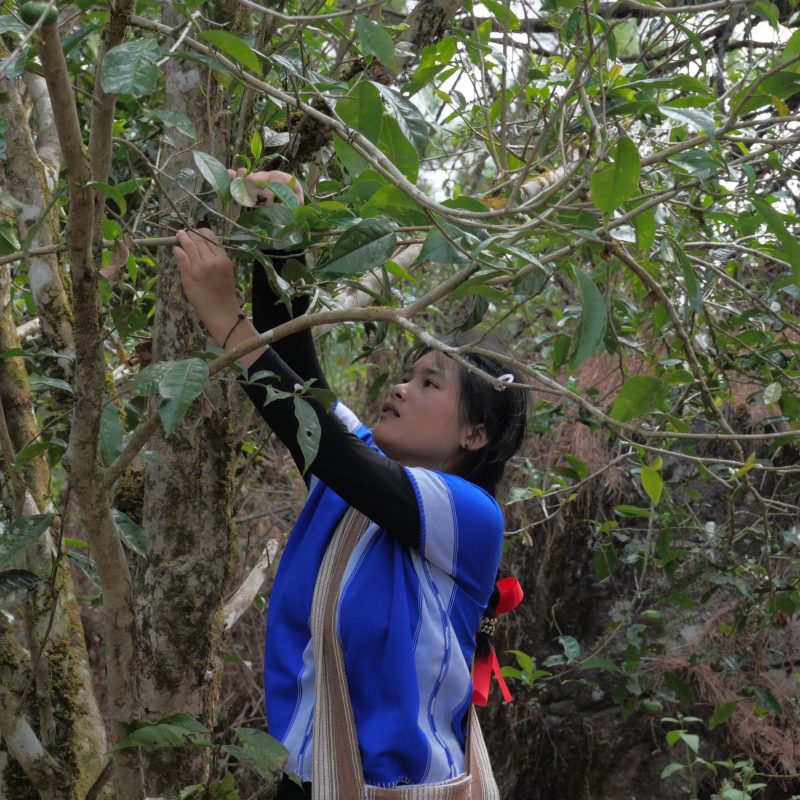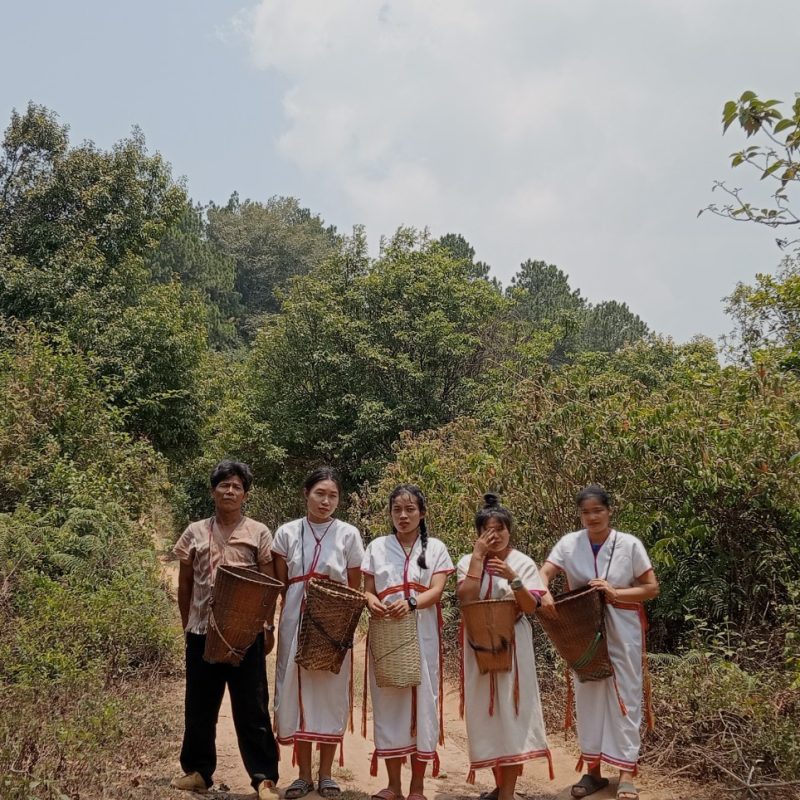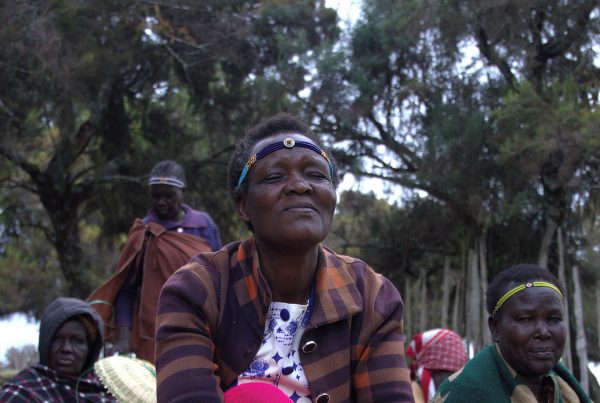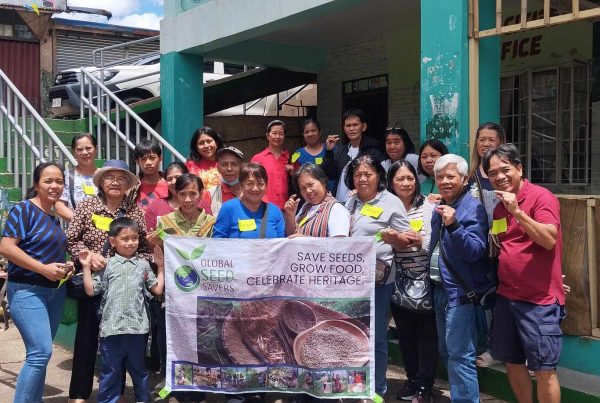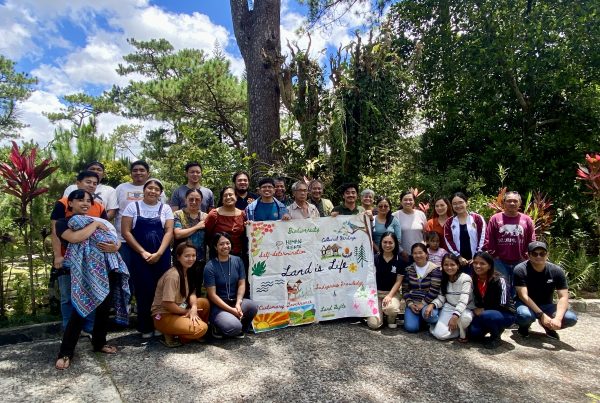Nestled amidst the lush green mountains of Mae Chaem District, Chiang Mai Province, lies a small village called “Baan Mae Ning Nai“. This is home to the Pgakenyaw ethnic group, a community that steadfastly holds onto its traditional way of life, even as the outside world rapidly changes.
Baan Mae Ning Nai might seem remote, but it boasts deeply rooted cultural foundations, sharp indigenous wisdom, and a robust community economy. They have developed a balanced approach, harmonizing environmental stewardship with their daily lives.
Managed Land: Forests Nurturing Life
Baan Mae Ning Nai, situated in Mae Suek Sub-district, Mae Chaem District, covers over 19,376 rai (3,099 hectares) which is wisely allocated into various categories, including community forests, conservation forests, and utilization forests. This land division reflects a profound understanding and wisdom in sustainable resource management. Notably, the “utilization forests” and “conservation forests” are not just woodlands; they serve as the community’s pantry, pharmacy, and a vital source of raw materials that sustain the villagers’ lives and preserve the ecosystem’s biodiversity.

Rotational Farming: The Heart of Food Security
At the core of Baan Mae Ning Nai villagers’ livelihood is “rotational farming.” This isn’t just agriculture; it’s a sophisticated system of managing soil, water, and time that aligns with the highland ecosystem. Villagers cultivate a plot for a period, then allow the land to rest and regenerate, rotating to a new plot. This cycle enables the soil to recover naturally without relying on chemical fertilizers. Within these rotational farms, a diverse array of crops is intercropped, ensuring food security for every household throughout the year.
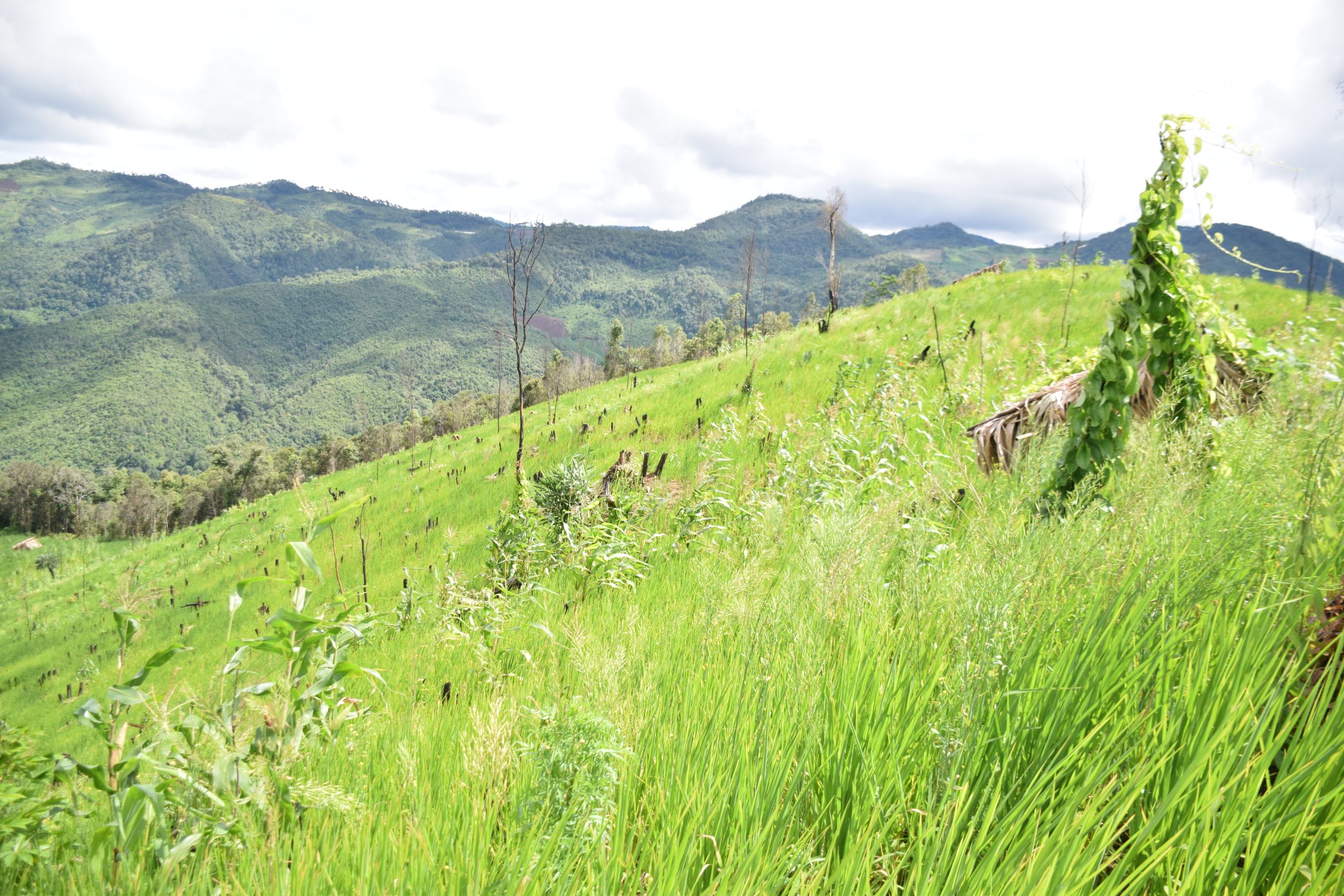
“Mae Ning Nai Youth”: A New Wave Returning Home
In an era where most young people head to big cities seeking educational and career opportunities, Baan Mae Ning Nai presents a different phenomenon. A small group of youth has decided to “return home,” bringing with them a strong determination to develop and conserve their birthplace. They’ve united under the name ” Mae Ning Nai Posterity ” and have become key drivers in various community dimensions, including resource management, developing local product brands, and inheriting ancestral knowledge.
A significant motivation for them is recognizing the “opportunities” hidden within the community’s traditional resources. These young people believe that by integrating modern knowledge in marketing, technology, or product design with indigenous wisdom, they can create sustainable added value and income for their families and community.
Furthermore, the youth act as “intermediaries,” connecting different generations within the community—elders, children, and working adults. They create spaces for exchanging ideas between modern concepts and local wisdom, becoming a crucial force in driving various projects to fruition.
From Community to Market: Creating Economic Alternatives
The reason Baan Mae Ning Nai’s youth continue to practice rotational farming isn’t solely about culture and identity; it also involves creating economic alternatives from the vegetations in the field. Today, we see a diverse range of processed products from rotational farming, including thousand-year-old tea, various rotational farm produce, and even traditional local foods.

Beyond processing, the youth also leverage technology for marketing, such as photography, branding, and online sales, which helps expand their market reach. These young people are “creators” who extend the community’s knowledge and practices, bringing them back to life and creating new value based on indigenous wisdom again.

“Ler Chaw”: Uniting for Sustainability
Under the concept of “uniting for sustainability,” the community established a group named ” Ler Chaw ” Every process is driven by the community’s youth, bringing together three main groups: women, youth, and the church group, who collaborate and design work together.
” Ler Chaw” is also a brand that drives the development of seasonal products, such as the “thousand-year-old tea” that the Baan Mae Ning Nai community has cared for through generations, or “fried wild mushrooms (Lentinus polychrous),” which are like the heroes of the hot season. Moreover, “Ler Chor” connects people of different generations and groups within the community to work together, whether they are mothers, fathers, elders, or even children.
Baan Mae Ning Nai: A Community That Knows Itself, Heals Itself, and Grows Together
Baan Mae Ning Nai may be just a small village in the valleys, but what’s happening here tells an important story: “sustainability” is not just a beautiful word; it’s a practical approach that requires the cooperation of all sectors, especially the community members themselves.
Youth are the vital force making sustainability a reality. They didn’t “return home to stay,” but “returned to transform,” returned to preserve, and returned to create new things for their original roots. And the Baan Mae Ning Nai community group is slowly growing, in line with the Pgakenyaw word “Ker Yaw,” which means “slowly but surely.”
This growth, however, comes from the people of the community and the youth of Baan Mae Ning Nai themselves, leading to the heart of Baan Mae Ning Nai: “A community that knows itself, heals itself, and is ready to grow together steadfastly on its own.”
Type: Blog
Region: Asia
Country: Thailand
Theme: Community-led conservation; Sustainable Livelihoods ; Traditional and local knowledge
Partner: Pgakenyaw Association for Sustainable Development (PASD)

